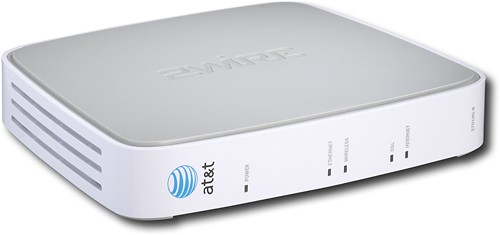For many home users, internet and network security present a challenge in pair with understanding quantum mechanics. In other words, they do their best to stay as far away from those topics as possible. That is until something terrible happens. To be honest, it can be intimidating for the average Joe to try and figure out how all those security protocols and encryptions work and what they do. Plus, don’t even let me start on all weird acronyms.
As one of the leaders in the networking field, Cisco company, in their infinite wisdom, tried to provide a simple but safe and effective solution for those home users.

They provided it in the form of WPS.
WPS stands for WI-FI Protected Setup. It is designed as a security standard for creating secure, wireless home networks. Sounds great, ha? So, why all of a sudden is everyone trying to disable it both left and right? Well, we’ll come to that. But, before, let’s talk about the positive aspects of WPS and what it is supposed to do in the first place.
Upsides of Using WPS
WPS uses an eight-digit PIN as a password. When enabled, all you need to do is press the WPS button on the device and the router, and voila! You are connected to the internet. There is no need for you to remember complex passphrases, figure out the correct network to connect to, small letters, capital letters in password. All that shenanigans around connecting different devices to your home wireless network will be in your past. Isn’t that awesome? Yes. Or, it would be if Cisco actually managed to make it both easy AND secure.
Unfortunately, they failed in the latter. WPS has a significant security flaw making it virtually unusable for all except homes in remote or inaccessible locations where the chances of someone with ill intentions to come and connect to the home Wi-Fi are close to none. So, what makes the WPS so vulnerable?
Downsides of Using WPS
To have eight digits as a password may sound good at first. After all, your credit card pin uses only four. However, with the router, it’s not nearly enough. Eight digits are small fry for brute force hacker attacks.
What is a brute force attack? Well, I’m glad you asked. Hacker will try to connect using a modified device and send every combination of numbers, ranging from 00000000 to 99999999 until he gets the right mix. And he will go through those numbers very fast. Once he connects to the router, there is a flaw in the WPS design that allows him to access the admin panel and take over the router. Having someone else in control of your router is never a good thing for half a dozen reasons.
Recommended reading:
- AT&T Broadband Light Blinking Green: How To Fix It?
- What Wi-Fi Extender Works Best With AT&T Fiber?
- AT&T Broadband Light Red: Meaning and How to Fix it?
- How to Connect to Wi-Fi Using WPS Pin? (A Brief Guide)
Hackers can use the router as a stepping stone for an attack on some of your devices connected to that router.
They can use your router to engage in some criminal activity, leading the police and FBI to your doorstep.
They can also pick up all the data from your network and take your bank account or credit card credentials.
They can also block you from using your own network if that suits them.
All in all, having a WPS turned on is pretty much the same as leaving your door open in a bad part of town, hoping no one will try to enter. All in all, not a good idea. So, how can you turn off that feature on the AT&T router and be that much safer and more secure? Let us show you:
How to Disable WPS on AT&T Router

A better part of users will use the router provided by AT&T. If you are one of them, you need to do the following:
Take a device that is connected to the router via Wi-Fi or ethernet cable. On a dedicated AT&T app and go to the Home network tab. Once there, choose Wi-Fi. Choose Advanced options and find Wi-Fi protected setup. Choose OFF from the drop-down menu and save changes.
If you are among those who decided to use their own router, your steps will be different with every manufacturer since all of them have different layouts and interfaces.
However, no matter what make and model of router you are using, you’ll need to log in to the administrator panel in order to find and disable the WPS feature.
To log in to the admin panel, you’ll need the router’s IP address and administrator username and password.
All those pieces of information you can find on the sticker glued to the backside of the router or online. Just google your router make and model default login. For example, ‘tp link router default login.’ Also, you can use this site to find the instructions for logging into the admin panel on many major brands.
If someone else set up your router and changed the username and password, you’ll have to contact that person to give you the credentials or restore the router to factory settings and use default ones. Keep in mind that if you choose to restore the router to factory settings, you’ll have to set up your wireless network from scratch. In any case, never leave them on default. It’s just as bad as having a WPS turned on.
We hope we have helped you find the right option and make the right decisions.
Stay safe and keep browsing!

Hey, I’m Jeremy Clifford. I hold a bachelor’s degree in information systems, and I’m a certified network specialist. I worked for several internet providers in LA, San Francisco, Sacramento, and Seattle over the past 21 years.
I worked as a customer service operator, field technician, network engineer, and network specialist. During my career in networking, I’ve come across numerous modems, gateways, routers, and other networking hardware. I’ve installed network equipment, fixed it, designed and administrated networks, etc.
Networking is my passion, and I’m eager to share everything I know with you. On this website, you can read my modem and router reviews, as well as various how-to guides designed to help you solve your network problems. I want to liberate you from the fear that most users feel when they have to deal with modem and router settings.
My favorite free-time activities are gaming, movie-watching, and cooking. I also enjoy fishing, although I’m not good at it. What I’m good at is annoying David when we are fishing together. Apparently, you’re not supposed to talk or laugh while fishing – it scares the fishes.
